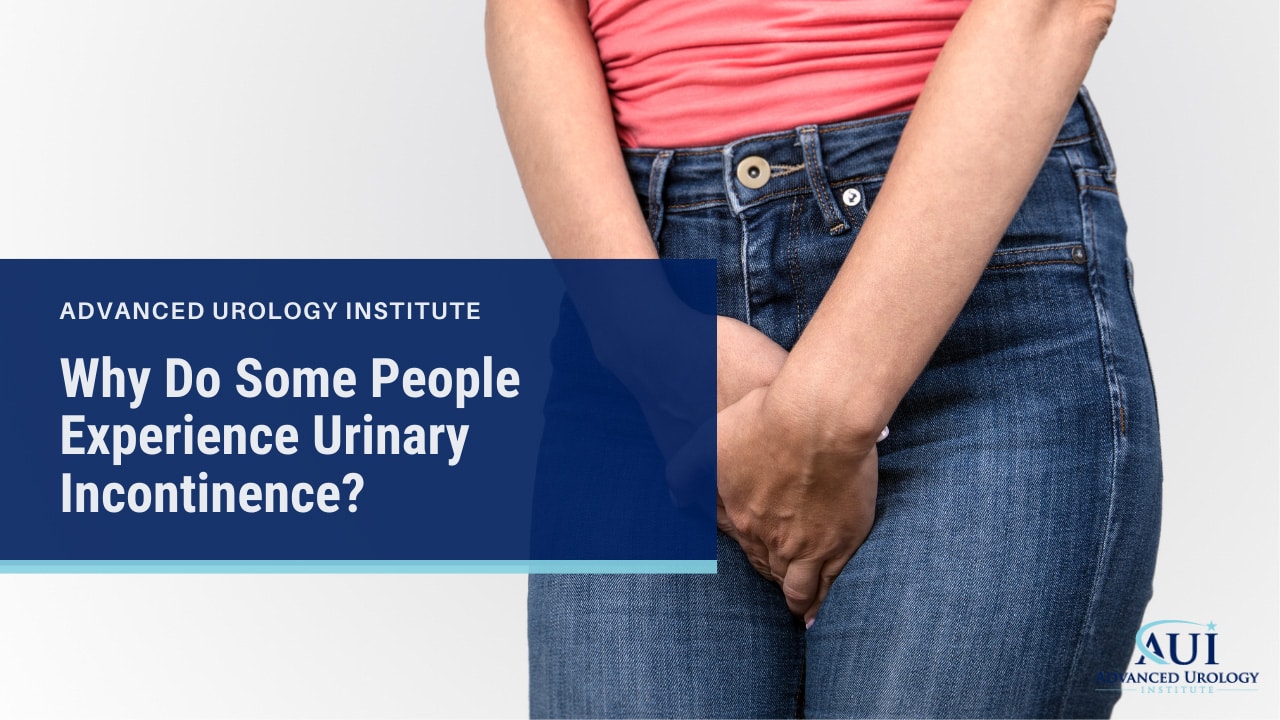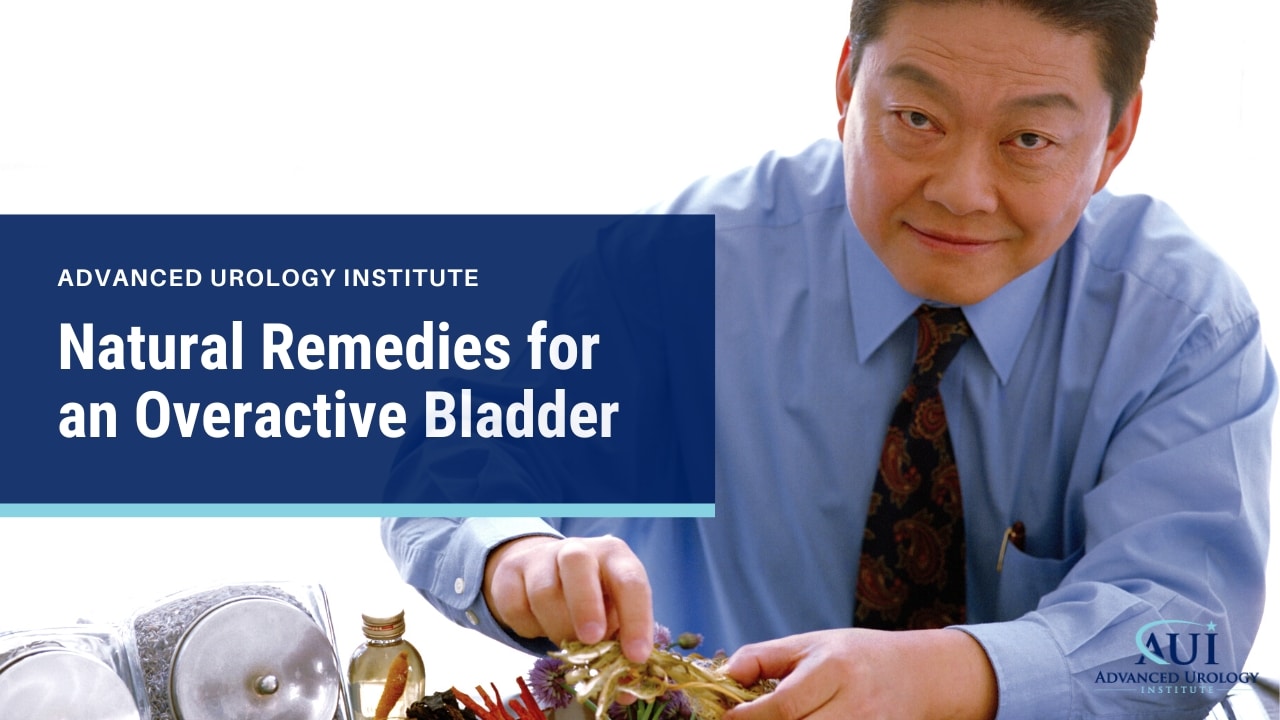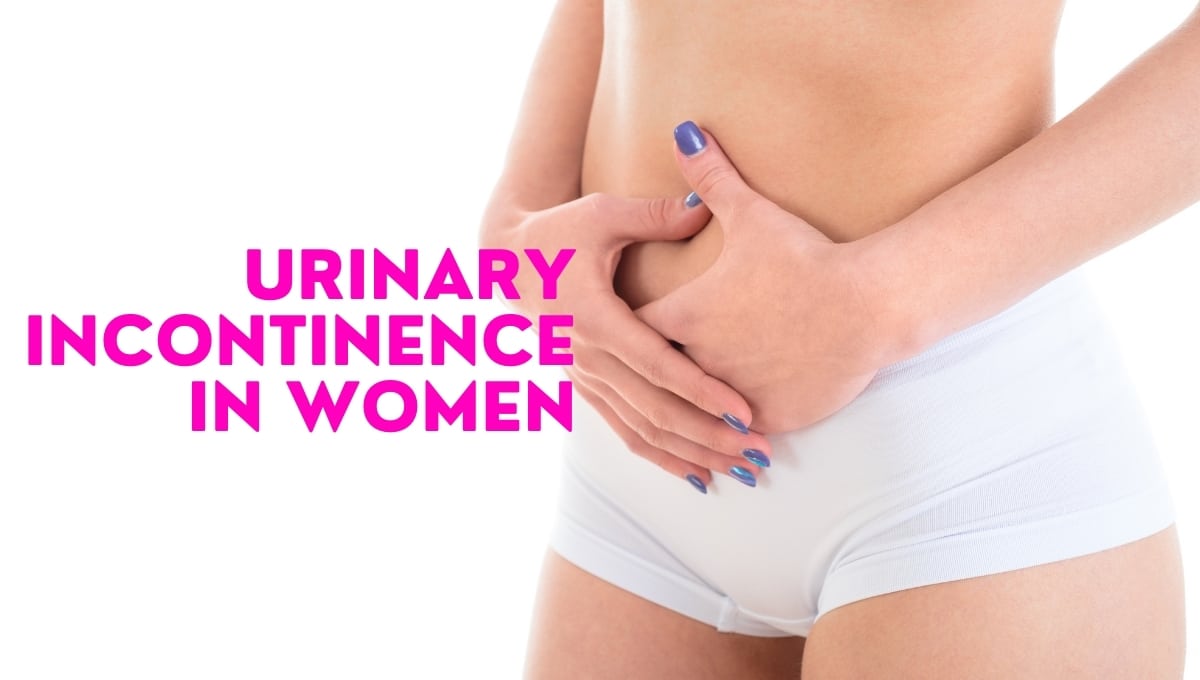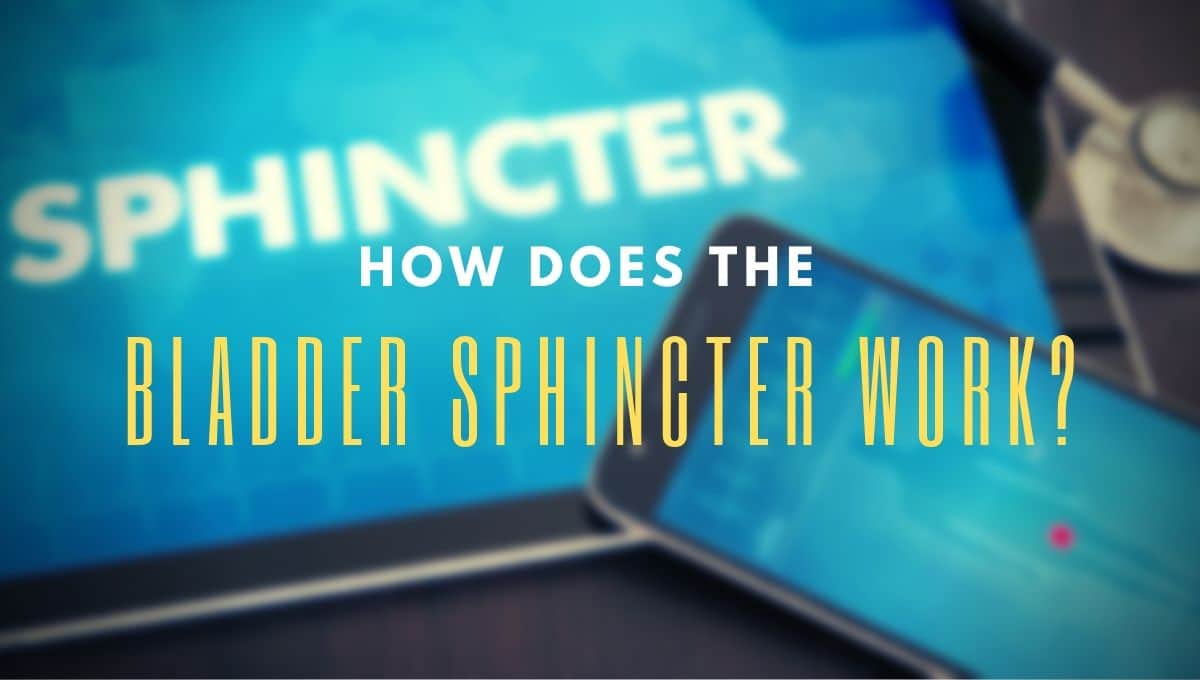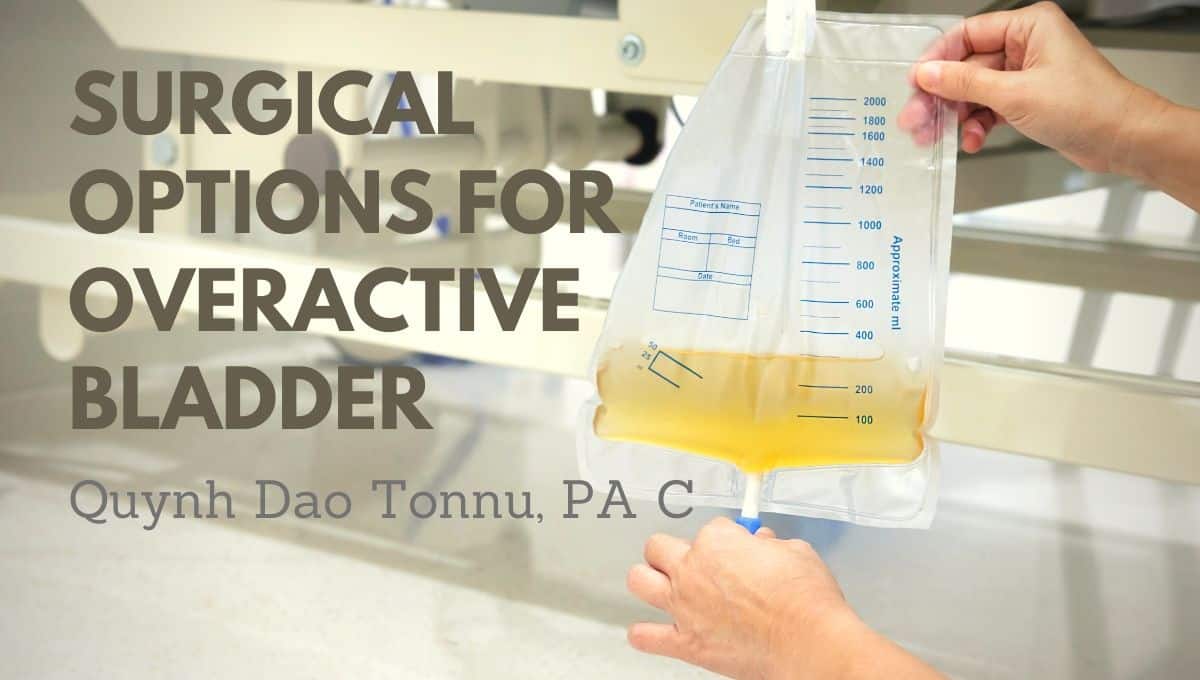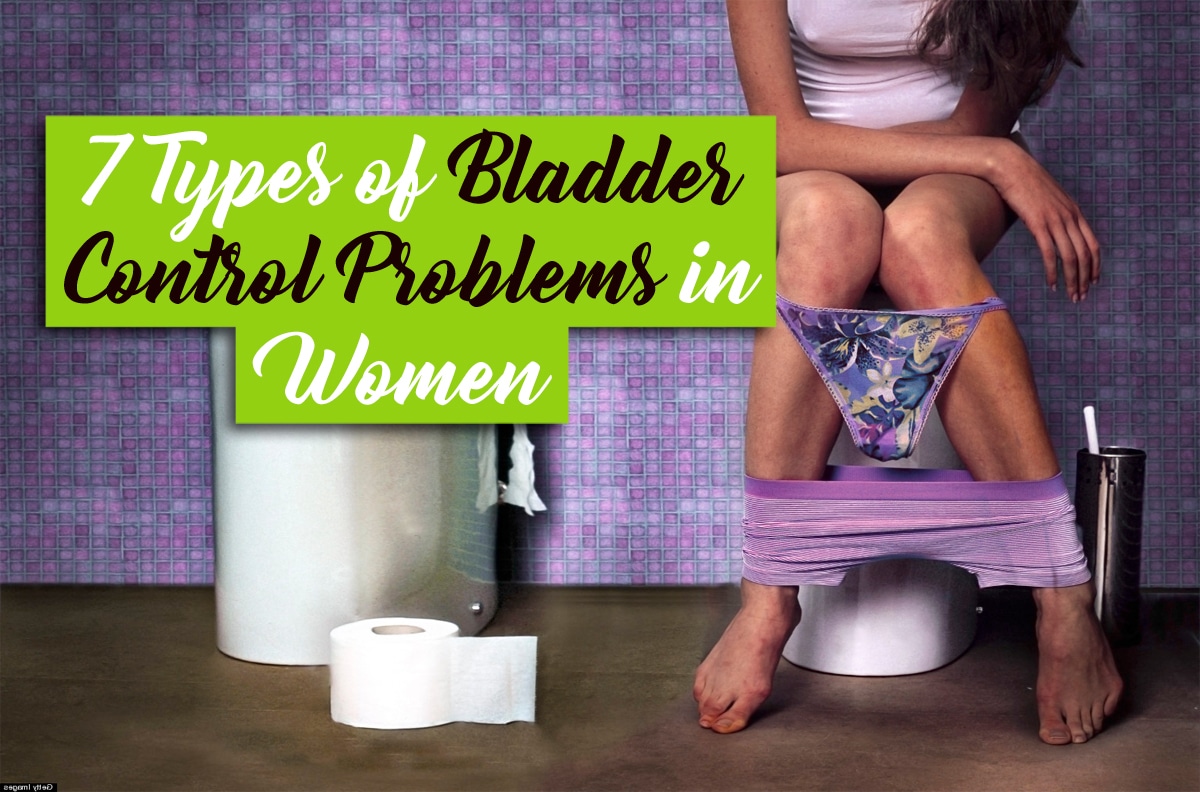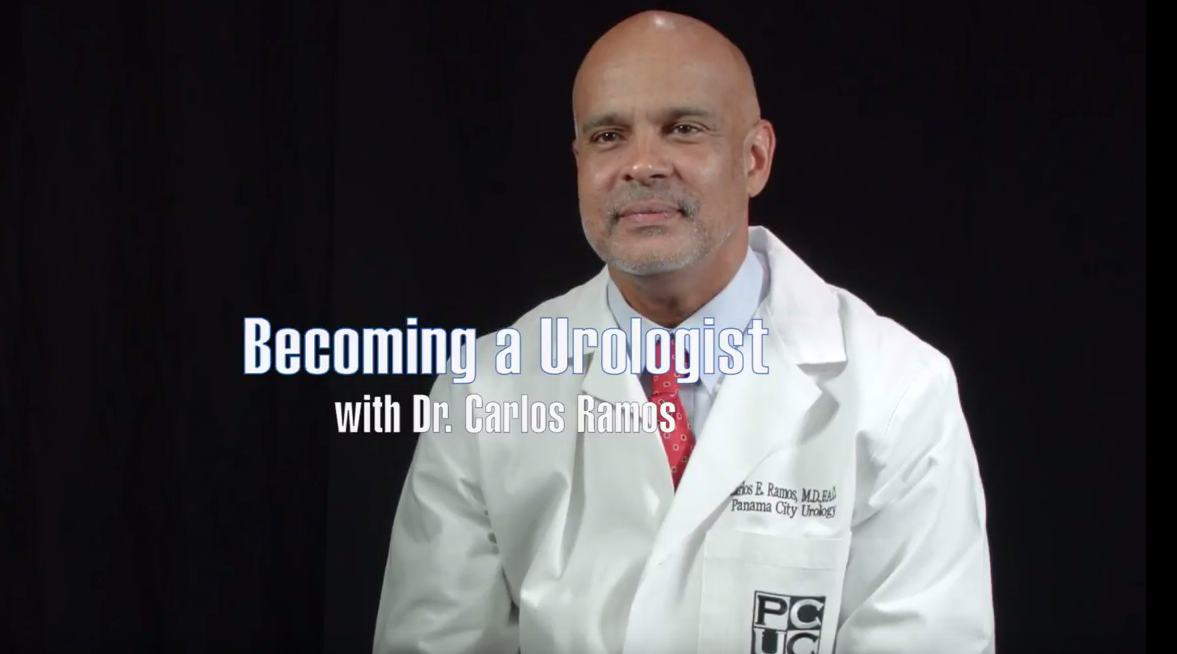People experience urinary incontinence because of several factors including age, gender, pregnancy, and medications that you take.
Continue readingAddressing Incontinence in Women – Insights by Quynh-Dao Tonnu, PA-C
How does Dr. Rishi Modh treat female urinary incontinence?
Natural remedies for an overactive bladder
Medtronic’s InterStim Therapy for Incontinence with Dr. Ali Syed
Dr. Samuel Lawindy Talks About How to Treat Urge Incontinence in Women
Urinary Incontinence in Women
The loss of bladder control known as Urinary Incontinence is a normal problem that is more common in women than men. The effects of urinary incontinence range from barely noticeable to severe. As Dr. Amar Raval from the Advance Urology Institute says, “It is a big issue for women out in public.” Incontinence can cause difficult and embarrassing situations.
There are many causes of urinary incontinence. To understand these causes, it is important to remember that urinary incontinence is a symptom, not a disease. Lifestyle choices that can exacerbate the problem include consuming alcohol, caffeine, spicy foods and certain medications. For women, life events that affect women’s bodies in a way that can cause incontinence include pregnancy, childbirth, menopause and aging. Other causes can be found in weight, family history and health.
 The different types of urinary incontinence can exhibit a variety of symptoms. Stress incontinence is characterized by small leaks of urine due to pressure on the bladder while laughing, coughing, sneezing or exerting oneself. The small leaks of overflow incontinence happen when the bladder has not fully emptied during urination. Urge incontinence is the sudden and intense urge to urinate, sometimes resulting in an involuntary loss of urine. Having to urinate frequently through the night is another symptom experienced by women with urge incontinence. It is also common for women to be affected by more than one of these types of incontinence.
The different types of urinary incontinence can exhibit a variety of symptoms. Stress incontinence is characterized by small leaks of urine due to pressure on the bladder while laughing, coughing, sneezing or exerting oneself. The small leaks of overflow incontinence happen when the bladder has not fully emptied during urination. Urge incontinence is the sudden and intense urge to urinate, sometimes resulting in an involuntary loss of urine. Having to urinate frequently through the night is another symptom experienced by women with urge incontinence. It is also common for women to be affected by more than one of these types of incontinence.
Fortunately, a wide range of treatment options is available. Women can work with their urologist to find the best treatment option for their individual situation. In some cases, treatment can be as easy as making slight lifestyle changes or taking an oral medication. Botox and acupuncture can help relieve stress incontinence. For more advanced cases, urethral slings can ease symptoms by lifting the urethra into a normal position, and robotic surgeries can lift the bladder in cases of incontinence caused by a prolapse.
The loss of bladder control can be a lifestyle limiting problem for women when it affects their ability to leave the house and maintain normal activities. The urologists at the Advance Urology Institute work closely with each patient to ensure they can live with freedom and confidence, and without the worries of incontinence. For more information, visit the Advanced Urology Institute website.
How Does the Bladder Sphincter Work?
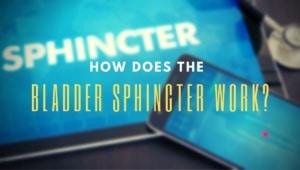 The bladder sphincter is made up of two muscles that control the release of urine from the bladder through the urethra. If the bladder were a reservoir, then the bladder sphincter would be the dam that holds back water and controls when it is released. The bladder sphincter is made up of two muscles, the internal and external sphincter muscles.
The bladder sphincter is made up of two muscles that control the release of urine from the bladder through the urethra. If the bladder were a reservoir, then the bladder sphincter would be the dam that holds back water and controls when it is released. The bladder sphincter is made up of two muscles, the internal and external sphincter muscles.
- The internal sphincter muscle is located at the opening of the bladder to the urethra. It is a smooth, involuntary muscle. Because of its location, it is also primary muscle prohibiting the release of urine.
- The external sphincter muscle surrounds the area of the urethra outside the bladder. It is the secondary muscle in control of urine flow. It is made of skeletal muscle and is a voluntary muscle.
Both muscles function in a similar fashion. When one relaxes the voluntary muscle, the involuntary muscle relaxes as well. When these muscles are relaxed, they open up allowing for urine to flow out of the bladder through the urethra and out the body. When these muscles are contracted, they keep urine in the bladder. Given the functions of the bladder sphincter, it is understandable the important role it plays in urinary continence. Damage or weakening of these muscles can also be a main cause for urinary incontinence.
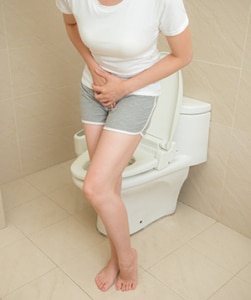 Urinary incontinence is the loss of bladder control. It is a common yet embarrassing problem. It can be as mild as releasing a small amount of urine when you laugh or sneeze, or as serious as having the urge to urinate come on so strong and fast that you don’t have time to get to a bathroom. Problems with the bladder sphincters can cause several different forms of incontinence.
Urinary incontinence is the loss of bladder control. It is a common yet embarrassing problem. It can be as mild as releasing a small amount of urine when you laugh or sneeze, or as serious as having the urge to urinate come on so strong and fast that you don’t have time to get to a bathroom. Problems with the bladder sphincters can cause several different forms of incontinence.
One form of urge incontinence occurs when the urethra can’t hold back urine in the bladder and the bladder sphincters relax uncontrollably.
Stress urinary incontinence is another common issue. In this case, stress or damage to the sphincters or surrounding muscles can cause urinary incontinence. This is common in women after childbirth, or in men after prostate surgery or radiation therapy. Neurogenic bladder dysfunction occurs when trauma or disease of the central nervous system causes a person to lose control of their bladder sphincter muscles.
Although issues caused by malfunctioning bladder sphincters can be embarrassing, there are a variety of treatment options available. The option that works best–whether it be lifestyle changes, medication, or surgery–depends on the patient and their overall medical history. Urologists work to understand their patient’s unique needs and develop the best plan to treat their bladder problems. For more information, visit the Advanced Urology Institute website.
Surgical Options for Overactive Bladder
If you feel frequent, sudden urges to urinate that you cannot control, you might be suffering from overactive bladder. This condition can lead to feelings of embarrassment or shame, but it’s a common problem and can be treated in a variety of ways. For many people, overactive bladder can be treated with lifestyle changes such as special diet, weight loss, regularly timed trips to the bathroom, and exercises to strengthen the pelvic floor. Dealing with symptoms by using absorbent pads is also an option.
 However, for some people, these methods are not enough to ensure they can live a healthy, fulfilling life. In these situations, surgical intervention is an option to correct overactive bladder problems.
However, for some people, these methods are not enough to ensure they can live a healthy, fulfilling life. In these situations, surgical intervention is an option to correct overactive bladder problems.
Augmentation Cytoplasty
One of the options for treating overactive bladder is called augmentation cytoplasty. This procedure increases the size of the bladder. The surgeon accomplishes this by removing a small part of the intestine and using it to replace parts of the bladder in order to increase its capacity. For some people, this procedure allows them to resume normal bladder function. For others, the use of a catheter may be necessary for the rest of their life.
Urinary Diversion Surgery
Another surgical treatment option for overactive bladder is urinary diversion surgery. This procedure involves diverting urine from the bladder. One option for bypassing the bladder involves linking the ureters, which normally connect the kidneys to the bladder, to an ostomy bag outside of the body. Another option involves the creation of a new bladder inside of the patient’s body, which means they will be able to continue normal urinary function.
Bladder Removal
Bladder removal surgery, or a cystectomy, is the last resort option for patients with overactive bladder for whom no other treatment has been successful. For men, bladder removal surgery also involves the removal of part of the prostate; for women, it involves removal of the uterus, ovaries and part of the vagina. Because this is a risky procedure that involves multiple organs, it is usually only used for more serious urological conditions such as bladder cancer or birth defects. Removal of the bladder necessitates the use of a urinary diversion such as an ostomy bag or a stoma.
An overactive bladder can be a debilitating condition, but there are many options for treatment. If you are dealing with this issue, the physicians at Advanced Urology Institute are here to help you reach a diagnosis and find a treatment to restore your quality of life.
What Does Dr. Nicole Szell Say About Women’s Urinary Incontinence?
2 Common Types of Incontinence
Urinary incontinence, defined as involuntary and accidental leakage or loss of urine because of defective bladder control, is a common problem in the United States that affects an estimated 25-33 percent of the population. While both men and women can have the condition, more women are at risk of having urinary incontinence because of several factors unique to women. For instance, due to pregnancy, childbirth, different anatomical characteristics in the pelvic region, atrophy (shrinking) of sphincter muscles and menopause, women suffer from urinary incontinence much earlier and more frequently than men do. Urinary incontinence is not a normal consequence of aging, though its prevalence increases with age.
Repercussions beyond Health
Urinary incontinence is not only a health problem, but also poses a variety of psychological, social and emotional difficulties. For instance, women with urinary incontinence may want to avoid certain situations or places for fear of an embarrassing accidental leak. A strong and sudden urge to urinate may cause embarrassment and discomfort, particularly when you are not near a bathroom or toilet. Women also may withdraw from activities they love doing due to the risk of an accidental leak. As a result, urinary incontinence can limit a woman’s activities, diminish her self-confidence and reduce her joy in life. But urinary incontinence is a treatable condition as long as the underlying cause can be identified and addressed.
Two Major Types of Urinary Incontinence
There are two main types of urinary incontinence: stress incontinence and urge incontinence.
1. Stress Incontinence
Stress incontinence is the accidental loss of urine from the bladder due to weak pelvic muscles. Urine loss occurs during physical activity such as when sneezing, laughing, coughing, exercising or doing an activity that exerts pressure on the pelvic muscles. When you are active, you put pressure on the bladder, which in turn allows urine to escape because the pelvic muscles are weak. Stress incontinence often occurs after pregnancy or childbirth because the pelvic muscles have been stretched and weakened and nerves to the bladder may have been damaged. Obesity or excess weight also can put pressure on the weak pelvic muscles and cause stress incontinence.
2. Urge incontinence
Urge incontinence (known as overactive bladder or OAB) is the sudden, intense and uncontrollable urge to urinate, which occurs when the coordination between the brain and bladder is out of sync. For instance, the brain may send voiding signals to the bladder without warning, or pelvic muscles may become too active and contract frequently even before the bladder is full, resulting in feelings of extreme frequency and urgency. Overactive bladder is the term used to describe any incontinence characterized by uncontrollable urgency, frequency, nocturia and dysuria. Urge incontinence is common in women with an inability to control detrusor contractions, but also may occur in women in menopause (due to inadequate estrogen) or with chronic or acute urinary tract infections, bladder stones, bladder cancer, stroke and multiple sclerosis (due to interference with nerve signals responsible for bladder control).
Sign of Something More Serious
There are many reasons why women may leak urine, from serious neurological conditions like multiple sclerosis, Parkinson’s disease and stroke, traumatic injury of the spinal cord, cardiovascular conditions affecting associated nerves, diuretic medicines, diabetes and obesity, alcohol consumption or recurrent urinary tract infections to inflammation that damages bladder nerves or irritates the bladder. It is therefore advisable to seek medical help as soon as you experience any sign of incontinence. Prompt and timely diagnosis and treatment may uncover a serious underlying problem early. At Advanced Urology Institute, we obtain a full history, conduct a comprehensive physical examination, perform specialized testing and treat urinary incontinence as safely and successfully as possible, making sure to deal effectively with all underlying issues.
A Wide Range of Treatment Options
Treatment of urinary incontinence at AUI depends on the type of incontinence and severity of symptoms. Options may include rehabilitation of pelvic muscles using weighted vaginal cones, electrical stimulation or Kegel’s exercises, sacral nerve neuromodulation, biofeedback and bladder retraining, extracorporeal magnetic innervation, occlusive devices (such as vaginal pessaries or urethral plugs), medications (such as Extended-Release Oxybutynin Chloride like Ditropan XL, tolterodine like Detrol, alpha-adrenergic drugs and estrogens), periurethral injection, and minimally invasive surgery. If you have any symptoms, you should see a urologist as quickly as possible to undergo testing, determine the underlying cause and detect any serious problem you may have.
At Advanced Urology Institute, your health is our foremost priority. We provide the right diagnosis and treatment of urinary incontinence that can quickly restore your confidence and enable you to get out there and do the things you love without worrying about accidental leakages. Do not suffer in silence. For more information on urinary incontinence, visit the “Advanced Urology Institute” site.
Treatment Options for Urge Incontinence
Urge incontinence is not an inescapable consequence of aging. In fact, a huge majority of women with the condition have been effectively treated or helped. The trick is simply not staying at home and giving up, but visiting a urologist as soon as possible for help.
Factors that affect the treatment decision
Effective treatment of urge incontinence in women depends on the kind of incontinence, personal preferences, underlying causes and severity of the symptoms. Where the condition has more than one underlying cause, the most serious cause will be dealt with first. Likewise, your urologist most likely will opt for the least invasive treatments first before moving on to invasive ones.
Treatments for urge incontinence include:
1. Behavioral techniques
These treatments include making certain lifestyle changes to improve bladder control. They include:
- (a) Bladder training: Entails delaying urination once the urge to pass urine comes. You can begin by holding off urine for as short as 10 minutes and then extending the holding time to hours. The goal of holding off urine each time the urge comes is to lengthen the duration between your trips to the toilet by up to 2.5 hours to 3.5 hours.
- (b) Double voiding: Means that you urinate and then wait for only a short duration (a few minutes) then try again to pass urine. The goal of double voiding is to achieve complete emptying of the bladder to avoid overflow incontinence.
- (c ) Scheduled toilet visits: Planning your toilet trips so that you urinate every 2-4 hours instead of waiting for the urge to come, will help you improve bladder control.
- (d) Diet and fluid management: To improve your bladder control, you may have to cut back or avoid acidic foods, alcohol and caffeinated drinks. By increasing physical activity, reducing liquid consumption or losing weight you can ease urge
incontinence.
2. Pelvic floor exercises
Also called Kegel exercises, pelvic floor exercises can strengthen the muscles responsible for bladder control and urination. To help you learn and perform these exercises, your doctor may recommend that you work with a physical therapist or to try using biofeedback techniques.
3. Electrical stimulation
The urologist may choose to insert electrodes into the vagina to strengthen and stimulate your pelvic floor muscles. With gentle stimulation, urge incontinence may resolve. However, you may need several treatments over many months to be successfully treated.
4. Medications
There are several common medications that are effective in treating urge incontinence. They include:
- (a) Anticholinergics: Include solifenacin (Vesicare), trospium (Sanctura), tolterodine (Detrol), fesoterodine (Toviaz), oxybutynin (Ditropan XL) and darifenacin (Enablex).
- (b) Alpha blockers: These drugs relax bladder muscles and make bladder emptying easier. They include alfuzosin (Uroxatral), doxazosin (Cardura), silodosin (Rapaflo) and tamsulosin (Flomax).
- (c) Topical estrogen: Application of a low dose of a topical estrogen, such as a vaginal patch, cream or ring can rejuvenate and tone the tissues of the vagina and urethra, helping treat urge incontinence.
- (d) Mirabegron (Myrbetriq): This drug relaxes the muscles of the bladder, increases the quantity of urine that the bladder can hold and increases the amount of urine that can be passed at any one time. As a result, it helps to empty the bladder more completely and treats urge incontinence.
5. Medical devices and interventions
Devices such as urethral inserts and pessaries can help to treat or relieve urge incontinence. Interventional therapies such as using a sacral nerve stimulator,bulking material injections, botulinum toxin (Botox) injections and nerve stimulators also can be used to treat urge incontinence.
6. Surgery
The doctor or urologist also may use surgery to correct the underlying cause of urge incontinence. Common surgical procedures include bladder neck suspension, prolapse surgery, artificial urinary sphincter and the sling surgery procedure.
7. Catheters and absorbent pads
If the urologist finds that no medical treatment can completely eliminate the incontinence, various products can be recommended to help ease the problem, minimize discomfort and reduce the inconvenience caused by urine leakage. The most commonly used products are catheters, absorbent pads and absorbent garments.
Urge incontinence is a treatable condition. As a woman, you should not continue living with this problem since there are solutions to help you. At Advanced Urology Institute,we have helped thousands of women with urge incontinence recover from it. Come see us so we can fix the problem. For more information,
visit the “Advanced Urology Institute” site.
2 Kinds of Incontinence
Urinary incontinence (UI) is the involuntary loss or leakage of urine because of faulty bladder control. Due to pregnancy, structure of the female urinary tract and menopause, women experience urinary incontinence twice as often as men. And according to various studies, 25-45 percent of women in the United States experience some degree of urinary incontinence. In women between 20 and 39 years old, 7-37 percent report some degree of incontinence, while 9-39 percent of women older than 60 report daily incontinence.
Two types of incontinence
Urinary incontinence may result from functional abnormalities in the lower urinary tract or may be caused by other illnesses. There are two types of incontinence, stress incontinence and urge incontinence. Stress urinary incontinence is the involuntary urine leakage from effort, exertion, sneezing or coughing. Stress incontinence occurs because of weakened pelvic floor muscles. It is the most common type of urinary incontinence in young women and the second most common one in older women. This type of incontinence will lead to urine leaks when performing any activity that increases strain on the weakened pelvic floor muscles, such as walking, jumping, exercise, bending, stretching, sneezing, coughing, lifting, and even sex. The amount of leaked urine varies from a few drops up to a tablespoon or more, depending on the severity of the condition.
Urge urinary incontinence is the involuntary urine leakage that is accompanied or immediately preceded by urgency (an abrupt or sudden compelling desire to pass urine that is very difficult to defer). Urge incontinence occurs because of overactivity of the detrusor muscle, with its hallmark being a sudden, overwhelming urge to pass urine, accompanied by leakage or loss of urine. Nighttime urination and frequent urination often occur with urge incontinence. For some women with urge incontinence, even changing a sitting position or hearing running water can trigger bladder contractions and result in urine loss. While urge incontinence may occur in anyone of any age, it is common among older women. Actually, just 9 percent of women ages 40-44 suffer from urge incontinence while at least 31 percent of women 75 and older have the condition.
Seek immediate help
Involuntary leakage of urine is more than a health concern. It affects women on a psychological, social and emotional level. Women with urinary incontinence may avoid certain situations or places for fear of having a leakage accident. In fact, for a significant number of women, the incontinence may be so serious that it calls for changing clothes and avoiding certain tasks and exercises. Some women also may experience mixed incontinence, a condition where urge incontinence and stress incontinence occur at the same time. Therefore, it is important for women experiencing urine leakage of any kind to seek help from a urologist to determine whether they are suffering from urge incontinence, stress incontinence, mixed incontinence or another issue.
At Advanced Urology Institute, we understand that there are a significant number of women living with a lot worse problems than they should. We provide top-notch facilities and experienced board-certified urologists to help such women. For more information, visit the site, Advanced Urology Institute.
7 Types of Bladder Control Problems in Women
Bladder control problems are common for many women. They are characterized by urine leakage, a progressively weaker urine stream, inability to empty the bladder or the frequent urge to urinate and rush to a bathroom. Bladder issues often restrict a woman’s range of physical activities and may cause withdrawal from social interactions, resulting in a diminished quality of life. Causes may include weakness of the pelvic fascio-muscular supports, nerve damage, various medications for neurologic conditions and underlying medical disorders like kidney disease and diabetes. While these problems differ according to cause and contributing factors, urologists can help women regain bladder control by identifying the type of bladder problem and administering the right treatment.
The 7 most common types of bladder control problems in women are:
1. Temporary or transient incontinence
This is a short-lived episode of loss of bladder control that commonly affects more than half of hospitalized women and at least a third of community-dwelling elderly women. It is often a side effect of medications (such as sleeping pills and diuretics) that lower cortical control over the urinary bladder or stimulate overproduction of urine. They may also be caused by surgery, pregnancy, urinary infections, severe constipation, or an inflamed or irritated bladder, vagina or urethra. In all cases, temporary incontinence will resolve on its own as soon as causative factors are identified and corrected.
2. Stress incontinence
This is the involuntary loss of bladder control associated with activities that increase physical pressure and stress in the abdomen and bladder. Affected women report having urine escapes when they laugh, cough, sneeze, have sex, exercise or engage in heavy lifting. It is the most common type of incontinence among women, occurring at any stage of life due to the physical changes of pregnancy, childbirth or menopause, all of which weaken the pelvic floor and reduce the effectiveness of bladder supporting ligaments.
3.Urge incontinence
Urge incontinence is the loss of bladder control commonly resulting from abnormal nerve signals or nerve damage due to a cerebrovascular accident, an infection or diabetes mellitus. It is characterized by a strong, abrupt and urgent need to urinate without prior warning, followed by the escape of a considerable amount of urine almost at once. Women affected by this bladder problem report leaking urine on their way to the restroom, urinate more than eight times per day and usually have to get to the bathroom more than two times overnight.
4. Mixed incontinence
This type of incontinence represents a combination of the characteristics of both urge and stress incontinence, with affected women experiencing episodes of sudden, urgent and uncontrollable urge to urinate together with urine leakage after a sudden cough, sneeze or laughter. All the factors that trigger urge and stress incontinence also cause mixed incontinence, including abnormal nerve signals, nerve damage, weakened pelvic floor muscles and connective tissue abnormalities.
5. Functional incontinence
Unlike the other types of incontinence, functional incontinence is not caused by abnormalities in the urinary system, nerves or muscles, but it occurs when a woman is unable to reach the bathroom in time to void because of mental and physical limitations. For example, a woman who is handicapped (such as having arthritis, a broken leg, Parkinson’s disease or Alzheimer’s disease) may not be able to move to the bathroom to urinate as soon as her bladder capacity is far exceeded, urinating where she is. Therefore, functional incontinence is a side effect of a mental or medical health issue.
6. Overflow incontinence
Characterized by the involuntary leakage of small amounts of urine when the amount of urine in the bladder exceeds the bladder’s maximum capacity, overflow incontinence occurs in women with weak bladder muscles, blocked urethra, kidney stones, scar tissue, pelvic organ prolapse, diabetes and multiple sclerosis. In overflow incontinence, the bladder has a substantial amount of residual urine and tends to overfill rapidly, resulting in the overflow of urine within a very short time. When not promptly treated, overflow incontinence can lead to bladder infection.
7. Overactive bladder
In some women, the inability to control the bladder is characterized by a sudden and unstoppable need to urinate, passing urine eight or more times per day and having to wake up two or more times every night to pass urine. In women with overactive bladder, detrusor muscles contract unpredictably and the inability to control the bladder can be so embarrassing that the affected person may want to isolate herself and limit her work and social life.
For women having bladder control problems, the good news is that a brief evaluation by an experienced urologist can quickly identify the type of bladder problem and pave the way for immediate treatment. If you have bladder control problems, inform your doctor and ask for help. Do not let your embarrassment keep you from getting the help you need. For more information, visit the site Advanced Urology Institute.
Becoming a Urologist with Carlos E. Ramos, MD
Video: Becoming a Urologist with Carlos E. Ramos, MD
Urologist Dr. Carlos E. Ramos expertise includes Adult urology, cancer, prostate, incontinence, robotic surgery, stone disease, urethral stricture disease and urinary reconstruction [Read Full Article…]



